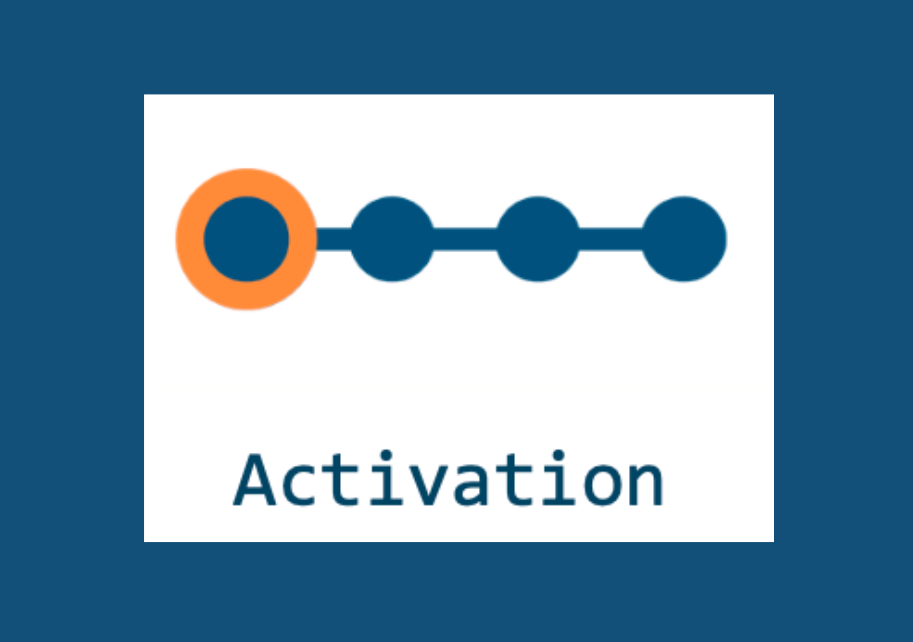Part 1: Ready, Set, Activate! Organizing, Prioritizing, and Activating Learning
By Tara Robillard
What is “Activation”?
Dr. Thomas Brown is a prominent ADHD researcher studying executive function. Brown breaks executive functions down into six different “clusters.”
- Organizing, prioritizing and activating for tasks
- Focusing, sustaining and shifting attention to task
- Regulating alertness, sustaining effort and processing speed
- Managing frustration and modulating emotions
- Utilizing working memory and accessing recall
- Monitoring and self-regulating action
This first cluster is categorized as “Activation” and basically it is characterized by difficulties in getting started on tasks or procrastination (Brown, 2008). Our learners that struggle in this particular area (especially those with ADHD) often can’t seem to be able to prioritize tasks and have a hard time figuring out how long a task will take. Ultimately, it makes jumping in and getting started and getting things done a real challenge.
Trouble Getting Started: What does it look like?
Signs that your learners may struggle with activation include:
- Avoiding or exhibiting lack of initiative to start tasks
- Struggling to identify, sequence and internalize the steps needed to complete a task
- Needing to be told to start a task, even if willing to do it
- Not knowing where to begin
- Underestimating the time needed to complete a task
- Waiting until the last minute to start a big project
- Losing track of homework assignments
- Getting caught up in the details and losing the big picture
- Having trouble coming up with ideas
Looking for more information? Here’s one good resource.
Stay tuned for how to apply the science in your practice to enhance learning!
References
Brown, T. (2008). Describing Six Aspects of a Complex Syndrome. CHADD.
Gioia, G. A., Isquith, P. K., Guy, S. C., & Kenworthy, L. (2000). Behavior Rating Inventory of Executive Function. Child Neuropsychology, 6, 235-238
Greenstone, H. (2011). Executive function in the classroom: Neurological implications for classroom intervention. Learning landscapes, 5(1), 101-114.
Landmark College Institute for Research and Training. (n.d.). Supporting Executive Functions in the Classroom
Landmark College Institute for Research. (2016). Sample Generating Open-ended Questions to Support Executive Functions.
What is “Activation”?
Dr. Thomas Brown is a prominent ADHD researcher studying executive function. Brown breaks executive functions down into six different “clusters.”
- Organizing, prioritizing and activating for tasks
- Focusing, sustaining and shifting attention to task
- Regulating alertness, sustaining effort and processing speed
- Managing frustration and modulating emotions
- Utilizing working memory and accessing recall
- Monitoring and self-regulating action
This first cluster is categorized as “Activation” and basically it is characterized by difficulties in getting started on tasks or procrastination (Brown, 2008). Our learners that struggle in this particular area (especially those with ADHD) often can’t seem to be able to prioritize tasks and have a hard time figuring out how long a task will take. Ultimately, it makes jumping in and getting started and getting things done a real challenge.
Trouble Getting Started: What does it look like?
Signs that your learners may struggle with activation include:
- Avoiding or exhibiting lack of initiative to start tasks
- Struggling to identify, sequence and internalize the steps needed to complete a task
- Needing to be told to start a task, even if willing to do it
- Not knowing where to begin
- Underestimating the time needed to complete a task
- Waiting until the last minute to start a big project
- Losing track of homework assignments
- Getting caught up in the details and losing the big picture
- Having trouble coming up with ideas
Looking for more information? Here’s one good resource.
Stay tuned for how to apply the science in your practice to enhance learning!
References
Brown, T. (2008). Describing Six Aspects of a Complex Syndrome. CHADD.
Gioia, G. A., Isquith, P. K., Guy, S. C., & Kenworthy, L. (2000). Behavior Rating Inventory of Executive Function. Child Neuropsychology, 6, 235-238
Greenstone, H. (2011). Executive function in the classroom: Neurological implications for classroom intervention. Learning landscapes, 5(1), 101-114.
Landmark College Institute for Research and Training. (n.d.). Supporting Executive Functions in the Classroom
Landmark College Institute for Research. (2016). Sample Generating Open-ended Questions to Support Executive Functions.

6/2/2025
AuthorTara Robillard is a senior researcher and curriculum materials and tools developer at TERC. She has degrees in Marine Science and Science Education and taught science at the high school level. Her research and development interests focus on accessibility and differentiating STEM teaching and learning for all students in formal and informal settings.
Share This Page: